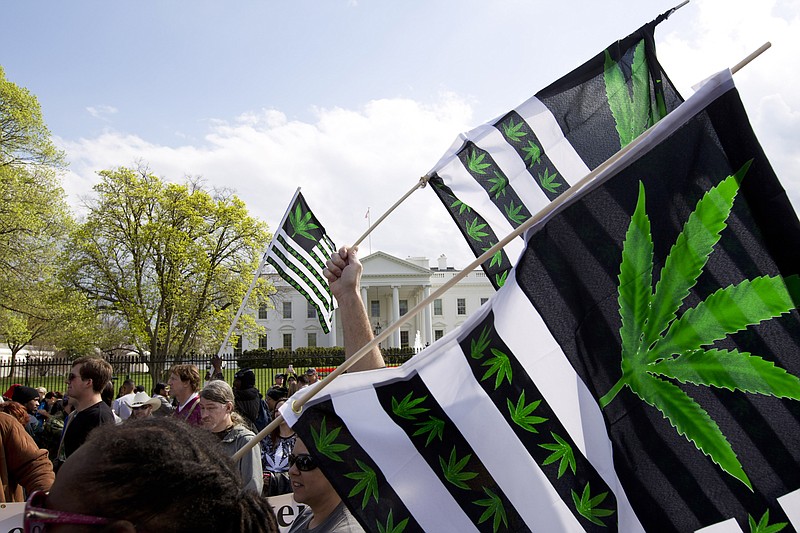By Dr. Curtis Varnell
Exiting interstate 40 at Roland, Oklahoma, I immediately saw the first medical marijuana store. Still unaccustomed to legalized marijuana, I began to read the names and count the stores. With names like High Times, The Green Room, the Bud Baron and others, they were easy to note. Between Roland and Fort Smith were a total of at least nine stores and, from the number of cars parked around them, all were doing a brisk business. Oklahoma has a reciprocity agreement for medical marijuana with Arkansas. Roland, with a population of 3,600 clearly were not supporting all of those stores and it was just as evident that much of the business was coming from nearby Arkansans. For a person of retirement age, it was an astounding revelation of how quickly times had changed.
As a country kid growing up in the 60’s and 70’s, marijuana was anathema, a dangerous hallucinogens used by those crazy college kids in California. Our teachers and parents warned us of the dangerous effects and TV portrayed it in a strength comparable to LSD. By the mid-1970’s, the market had moved even to the small towns of mid-America and it was not uncommon to run across patches of cultivation in isolated regions. Police, especially right before elections, would raid huge patches of the home-grown drug. Newspapers and TV video from that time period would picture groups of law enforcement, standing downwind from the bonfires with silly grins on their faces, watching the weed go up in smoke.
One of my enterprising uncles grew a large crop between rows of corn in his garden. His elderly neighbor, noting the crop, remarked, “Ole Jack, he is a good neighbor but he can’t grow tomatoes worth a darn. Biggest plants you ever saw but nary a tomato to be found!”
Marijuana has a history dating back to the colonial period when a form of it was grown as hemp and used in the production of rope, sails, and even clothing. In the late 19th century, it was a popular ingredient in many medicines and was sold openly in the market. In 1910, the Mexican Revolution resulted in thousands of immigrants fleeing into the U.S. from Mexico. Recreational use of marijuana was common in Mexico and began to be used more extensively in the U.S. Anti-drug campaigners warned against the “Mexican Menace” or “Marijuana Menace” and public fear lead to it being banned in many states, including Arkansas (1923). By 1937, cannabis was banned at the federal level and in 1970 was classified as a Schedule 1 drug with a high potential for abuse and with no accepted medical use.

That did not prevent the popularity or the increased use of the substance. In 1969, only 12% of the American population favored legalization; today over 65% of Americans favor total legalization. In the years between, thousands of Americans have been arrested, fined, and imprisoned for the use of marijuana. The 1984 Comprehensive Crime Control Act, signed by Ronald Reagan, placed mandatory sentences for drug users, including many arrested for pot. Since that time, people and laws have become much more lenient. Many states began to decriminalize the possession of small amounts of marijuana. During his last term, President Clinton even famously admitted to “smoking” marijuana but never inhaling leading to Johnny Carson jokingly stating, “Even when a Democrat admits doing something wrong, he can’t do it right.”

Following the lead of several western states, in 2016 Arkansas legalized the sale of medical marijuana. The law allowed a limited number of producers and sellers to provide marijuana to qualified individuals. The law allows a person 18 years or older to obtain up to 2.5 oz every 14 days. The requirements to obtain a license is fairly lax, allowing individuals to purchase “pot” for anxiety, post traumatic events, and depression. Several cities, including Eureka Springs, Fayetteville, and Little Rock make the possession of cannabis one of the lowest priorities for arrest.
Twenty-four states now have legalized marijuana and fourteen, including Arkansas have medical marijuana.
From “maddening” drug to acceptable treatment for depression to recreational use, it’s hard for an individual to know what to think about marijuana. Even more maddening is the plethora of federal, state, local, and even city laws governing its use. What might pass as acceptable practice in one location could result in a jail term a few miles away, and that’s not even considering the fact that its sale and use is still a federal offense. After two-hundred years, it would seem that our country could at least come up with some common consensus on its use.






